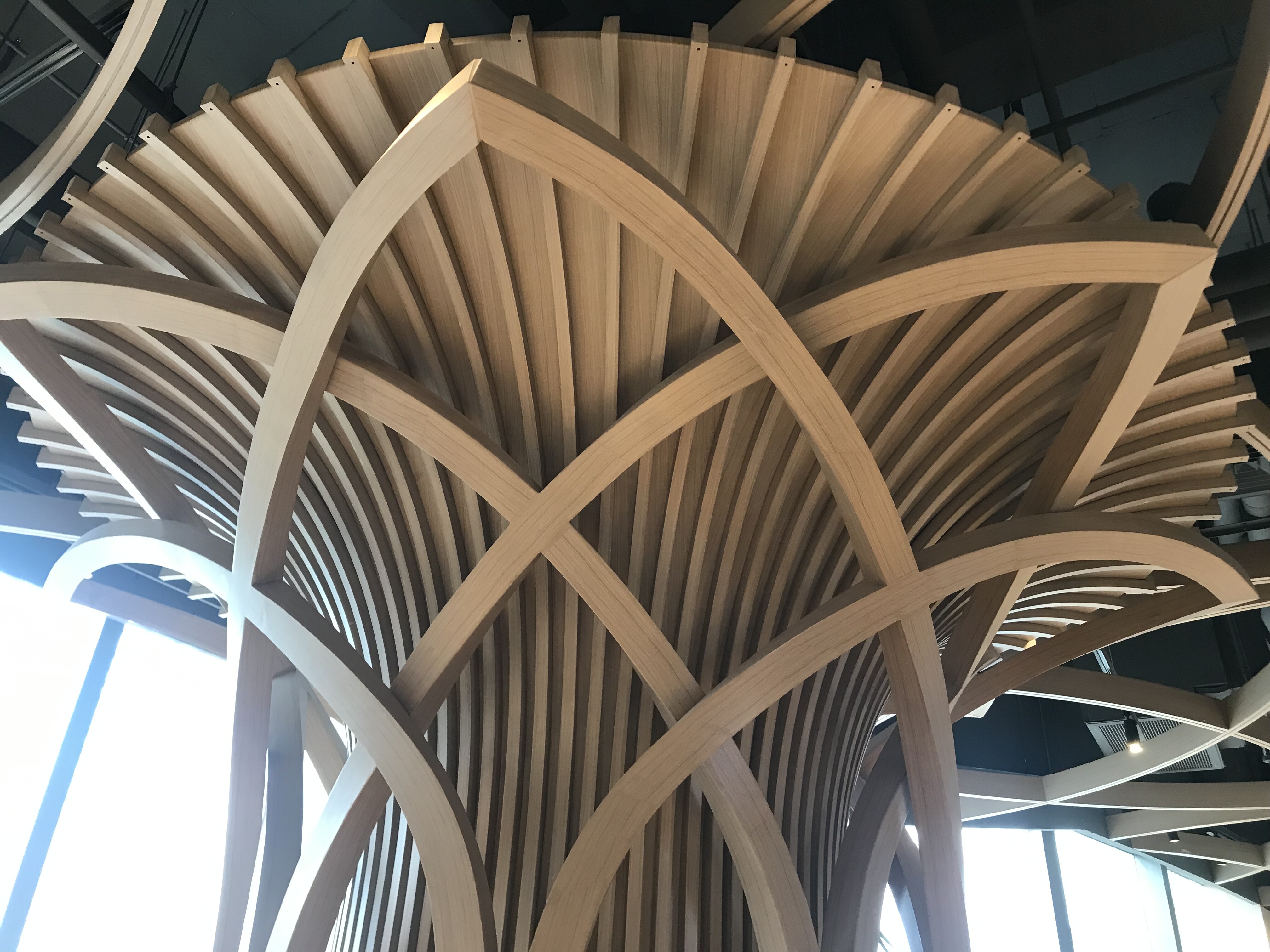Email format error
Email cannot be empty
Email already exists
6-20 characters(letters plus numbers only)
The password is inconsistent
Email format error
Email cannot be empty
Email does not exist
6-20 characters(letters plus numbers only)
The password is inconsistent


The world of architecture and interior design is continuously evolving, with new trends and innovations constantly emerging. One such trend that has gained significant traction is the use of curved panels. Particularly, ODM curved panels have become a popular choice among architects and designers. This blog will delve into the numerous advantages and applications of ODM curved panels, making a compelling case for their use in modern construction and design projects.
What are ODM Curved Panels?
ODM, or Original Design Manufacturer, refers to companies that design and manufacture products as per their own specifications and then sell them to other companies, which rebrand them for sale. ODM curved panels are a specific type of panel that features a curved design, offering a unique aesthetic appeal and functionality. These panels are designed to meet the specific needs and preferences of clients, providing customized solutions that enhance the overall design and structure of buildings.
The Rise of Curved Panels in Architecture
Curved panels have become increasingly popular in architecture due to their ability to create smooth, flowing lines and dynamic shapes that are not achievable with traditional flat panels. The use of curved panels can transform ordinary buildings into extraordinary works of art, adding a sense of movement and fluidity to the structure.
Advantages of Using ODM Curved Panels
Aesthetic Appeal: One of the most significant advantages of using ODM curved panels is their aesthetic appeal. The curved design adds a modern and sophisticated look to buildings, making them stand out from the rest. The unique shapes and lines created by these panels can make a building look more dynamic and interesting.
Customization: ODM curved panels are highly customizable, allowing architects and designers to create unique designs that meet their specific requirements. This level of customization is particularly beneficial for projects that require a distinct look and feel.
Structural Benefits: Curved panels can also offer structural benefits. They can be used to create stronger and more resilient structures, as the curved design can help distribute weight more evenly and reduce stress on certain parts of the building.
Versatility: ODM curved panels are versatile and can be used in a variety of applications, from exterior facades to interior design elements. They can be made from different materials, such as glass, metal, and composites, making them suitable for a wide range of projects.
Energy Efficiency: The use of curved panels can also contribute to energy efficiency. The design can help to improve the insulation properties of a building, reducing the need for heating and cooling and thereby lowering energy costs.
Applications of ODM Curved Panels
Exterior Facades
One of the most common applications of ODM curved panels is in exterior facades. The curved design can add a distinctive and modern look to a building's exterior, making it more visually appealing. Additionally, the use of these panels can help improve the building's structural integrity and energy efficiency.
Interior Design
ODM curved panels are also popular in interior design. They can be used to create unique and eye-catching interior elements, such as curved walls, partitions, and ceilings. The use of curved panels in interior design can add a sense of fluidity and movement to a space, making it more dynamic and interesting.
Commercial Buildings
In commercial buildings, ODM curved panels can be used to create striking and memorable designs. They are often used in the construction of shopping malls, office buildings, and hotels to create a modern and upscale look. The use of curved panels in these buildings can also help improve their energy efficiency and structural integrity.
Residential Projects
ODM curved panels are not limited to commercial buildings; they can also be used in residential projects. Homeowners and architects are increasingly opting for curved panels to create unique and modern home designs. These panels can be used in various parts of a home, from the exterior facade to interior elements, to create a cohesive and stylish look.
Materials Used in ODM Curved Panels
ODM curved panels can be made from a variety of materials, each offering its own set of advantages. Some of the most commonly used materials include:
Glass
Glass is a popular choice for curved panels due to its transparency and modern look. Curved glass panels can be used in both exterior and interior applications, offering a sleek and sophisticated appearance. They can also help improve the energy efficiency of a building by allowing natural light to enter, reducing the need for artificial lighting.
Metal
Metal, particularly aluminum, is another commonly used material for ODM curved panels. Aluminum curved panels offer a lightweight yet durable solution that is resistant to corrosion and weathering. They can be used in a variety of applications, from exterior facades to interior design elements, providing a modern and industrial look.
Composites
Composite materials, such as fiber-reinforced polymers, are also used in the manufacture of ODM curved panels. These materials offer a high strength-to-weight ratio and can be easily molded into complex shapes, making them ideal for creating custom curved panels. They are also resistant to corrosion and weathering, making them suitable for both interior and exterior applications.
Customization Options for ODM Curved Panels
One of the key advantages of ODM curved panels is their high level of customization. Manufacturers can create panels that meet the specific requirements of their clients, offering a wide range of customization options. Some of the customization options available for ODM curved panels include:
Shape and Size
ODM curved panels can be manufactured in a variety of shapes and sizes, allowing architects and designers to create unique and custom designs. The panels can be made to fit specific dimensions and can be curved to different degrees, depending on the requirements of the project.
Material and Finish
Clients can choose from a variety of materials and finishes for their ODM curved panels. Whether they prefer the transparency of glass, the modern look of metal, or the durability of composites, manufacturers can create panels that meet their specific needs. Additionally, the panels can be finished in a variety of ways, such as anodizing, painting, or powder coating, to achieve the desired look and feel.
Color
Color is another important aspect of customization for ODM curved panels. Manufacturers can create panels in a wide range of colors, allowing clients to choose a color that complements their design and enhances the overall aesthetic appeal of the building.
Challenges and Considerations
While ODM curved panels offer numerous advantages, there are also some challenges and considerations to keep in mind when using these panels in construction and design projects.
Cost
One of the main challenges associated with ODM curved panels is cost. The customization and manufacturing process can be more expensive compared to traditional flat panels. However, the benefits of using curved panels, such as their aesthetic appeal and structural advantages, can often outweigh the additional cost.
Installation
The installation of ODM curved panels can also be more complex compared to traditional panels. The curved design requires precise measurements and careful installation to ensure a seamless and smooth finish. It is important to work with experienced professionals who have expertise in installing curved panels to achieve the best results.
Maintenance
Maintaining ODM curved panels can also be more challenging compared to flat panels. The curved design can make cleaning and maintenance more difficult, especially for exterior applications. However, choosing durable materials and finishes can help reduce the maintenance requirements and extend the lifespan of the panels.
Future Trends in ODM Curved Panels
As the demand for unique and modern architectural designs continues to grow, the use of ODM curved panels is expected to increase. Advances in manufacturing technology and materials will likely lead to more innovative and cost-effective solutions for creating curved panels. Additionally, the focus on sustainability and energy efficiency in construction is expected to drive the development of new materials and designs for ODM curved panels.
Integration with Smart Technologies
One future trend in ODM curved panels is the integration with smart technologies. This could include the use of smart glass that can change its transparency or color in response to environmental conditions, or the incorporation of sensors and other smart technologies into the panels to enhance the functionality and performance of buildings.
Sustainable Materials
The use of sustainable materials in the manufacture of ODM curved panels is another trend that is expected to gain traction. As the construction industry continues to focus on sustainability, there will be a greater demand for panels made from recycled or eco-friendly materials that reduce the environmental impact of construction projects.
Conclusion
ODM curved panels are revolutionizing modern architecture and interior design. Their aesthetic appeal, customization options, and structural benefits make them a popular choice for a wide range of applications, from exterior facades to interior design elements. While there are some challenges associated with their use, the advantages of ODM curved panels far outweigh the drawbacks. As technology and materials continue to advance, the future of ODM curved panels looks promising, with new innovations and trends expected to emerge. Whether you are an architect, designer, or homeowner, considering ODM curved panels for your next project can help create a unique and modern design that stands out from the rest.